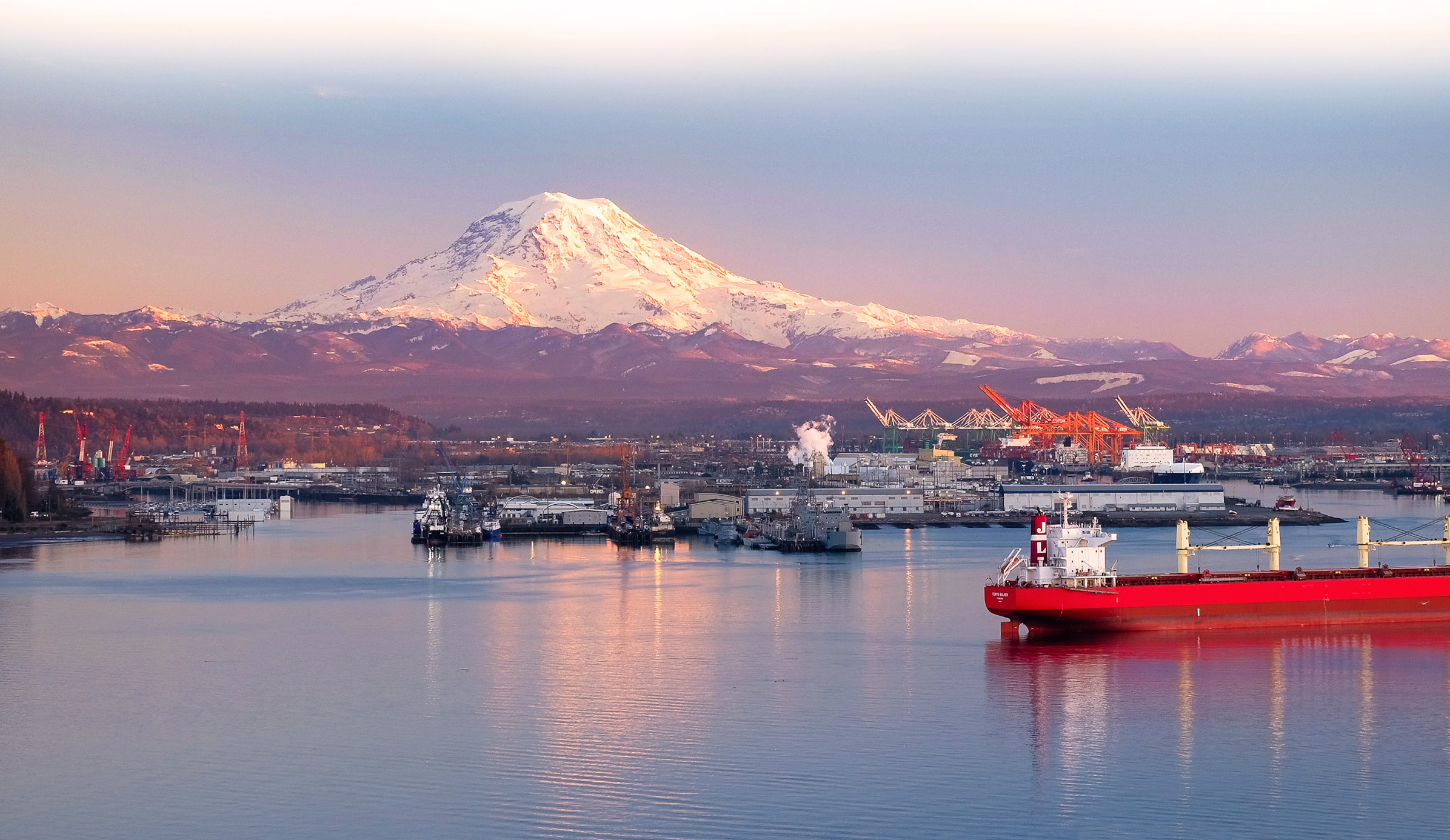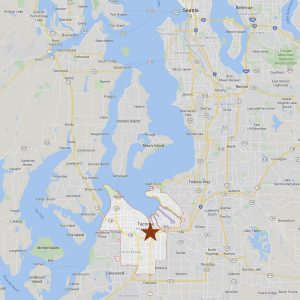Self-Guided Field Trip: Tacoma’s Working Waterfront and Tideflats
Walk along the Chihuly Bridge of Glass from Pacific Avenue towards the Museum of Glass. Before dropping down to the museum, look across the waterway to the Tacoma tideflats.

Tacoma looks to the future, plans for resilience
Tacoma is a vibrant, beautiful city, with a population of more than 200,000 and a 38-mile coastline that offers stunning vistas of Puget Sound to the north and Mount Rainier to the south.
Near downtown Tacoma, located on Commencement Bay, a 12-mile area of tideflats is home to more than 300 active businesses. Tacoma’s major maritime industrial center, which includes the Port of Tacoma, sits on the tideflats across from the Museum of Glass. The Port is one of the top ten container freight ports in the United States and an economic engine within the region. The frequency of flooding in Tacoma, and specifically in the tideflats, is increasing due to changing weather patterns. In preparation for its future, Tacoma partnered with Washington Sea Grant (WSG) on the NOAA-funded “Washington Coastal Resilience Project” as a pilot community, testing methods to incorporate technical guidance for coastal hazards and climate change into community plans. This included incorporating sea-level rise into capital facilities planning, with a focus on the Tacoma tideflats.
WSG helped the city of Tacoma begin to address the impacts of sea-level rise on the tideflats by:
◆ developing new, locally specific sea-level rise projections that incorporate vertical land movement;
◆ preparing guidance on how to map the sea-level rise projections using GIS, and training Tacoma GIS staff on how to use the system;
◆ presenting workshops for city staff on how to apply sea-level rise projections; and
◆ assisting staff with the incorporation of sea-level rise information into the capital facilities planning process for infrastructure in the tideflats.
 ADDRESS AND DIRECTIONS
ADDRESS AND DIRECTIONS
Walk onto the Chihuly Glass Bridge on Pacific Avenue, between the Washington Historical Museum (1911 Pacific Ave.) and the U.S. District Court House (1717 Pacific Ave.), across the railroad tracks.
PARKING
Street parking on Pacific Avenue and a paid parking lot behind the Washington Historical Museum.
WHAT TO WEAR
Comfortable walking shoes, casual, warm clothing.